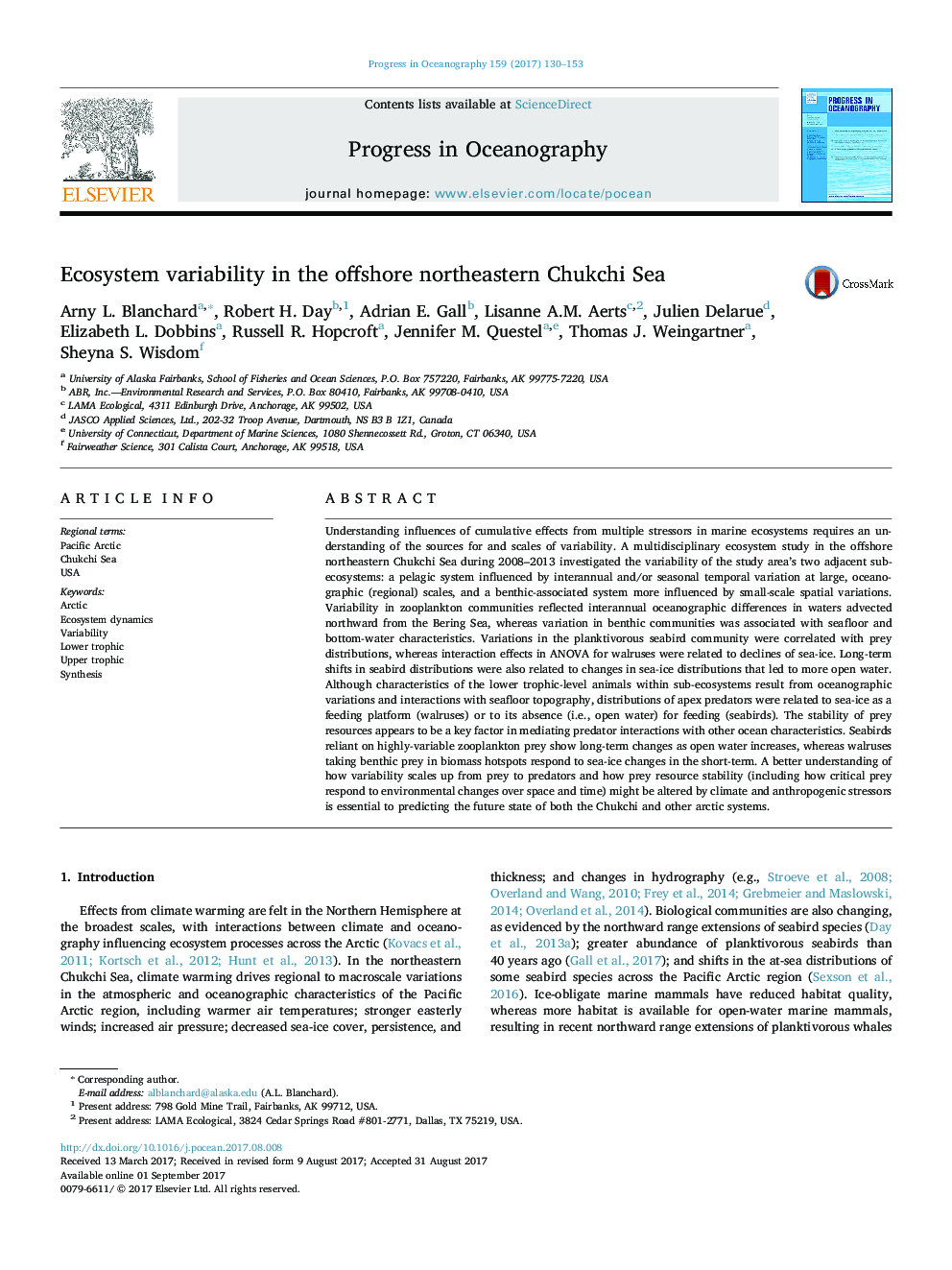| کد مقاله | کد نشریه | سال انتشار | مقاله انگلیسی | نسخه تمام متن |
|---|---|---|---|---|
| 5766467 | 1627899 | 2017 | 24 صفحه PDF | دانلود رایگان |
- Variability of two sub-ecosystems in the northeastern Chukchi Sea is investigated.
- The pelagic system varied seasonally and interannually at regional scales.
- The benthic system varied spatially at small to study-site scales.
- Stability of prey resources is a key factor in mediating predator interactions.
- Scaling variability from prey to predators is essential to predicting change.
Understanding influences of cumulative effects from multiple stressors in marine ecosystems requires an understanding of the sources for and scales of variability. A multidisciplinary ecosystem study in the offshore northeastern Chukchi Sea during 2008-2013 investigated the variability of the study area's two adjacent sub-ecosystems: a pelagic system influenced by interannual and/or seasonal temporal variation at large, oceanographic (regional) scales, and a benthic-associated system more influenced by small-scale spatial variations. Variability in zooplankton communities reflected interannual oceanographic differences in waters advected northward from the Bering Sea, whereas variation in benthic communities was associated with seafloor and bottom-water characteristics. Variations in the planktivorous seabird community were correlated with prey distributions, whereas interaction effects in ANOVA for walruses were related to declines of sea-ice. Long-term shifts in seabird distributions were also related to changes in sea-ice distributions that led to more open water. Although characteristics of the lower trophic-level animals within sub-ecosystems result from oceanographic variations and interactions with seafloor topography, distributions of apex predators were related to sea-ice as a feeding platform (walruses) or to its absence (i.e., open water) for feeding (seabirds). The stability of prey resources appears to be a key factor in mediating predator interactions with other ocean characteristics. Seabirds reliant on highly-variable zooplankton prey show long-term changes as open water increases, whereas walruses taking benthic prey in biomass hotspots respond to sea-ice changes in the short-term. A better understanding of how variability scales up from prey to predators and how prey resource stability (including how critical prey respond to environmental changes over space and time) might be altered by climate and anthropogenic stressors is essential to predicting the future state of both the Chukchi and other arctic systems.
Journal: Progress in Oceanography - Volume 159, December 2017, Pages 130-153
